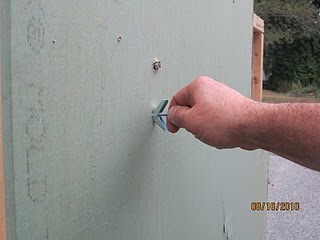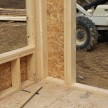How To Know Which Wall Anchor To Use
Drywall Anchors ~ What’s The difference?
There are many styles of wall anchors, each one having different strengths and weaknesses. The important thing is to use the proper anchor for the correct application.
Often times a manufacturer will supply an inexpensive anchor with a towel bar or curtain rod set. It has been my experience that manufacturers supply the least expensive and minimum strength anchor that will do the job. There are safer, stronger options.
There are two types of wall anchors:
- Hollow Wall Anchors
- Solid Wall Expansion Anchors
Type 1: Hollow Wall Anchors
Hollow-wall anchors are the simplest, easiest to install as well as the weakest connection. They can only be used in hollow walls like drywall and blue board. They are inserted into a pre-dilled hole and work by spreading within the hollow of the wall. Once spread, the anchor cannot be pulled back through the smaller installation hole.
Type 2: Solid Wall Expansion Anchors
Expansion anchors are used in thick, solid materials such as concrete, brick, mortar, metals or wood. They work by expanding when a screw or bolt is threaded into them.
There are different types of anchors with in each category
- Plastic expansion anchors
- Threaded anchors
- Expansion anchor
- Toggle bolts
Plastic expansion anchors:
Plastic expansion anchors are one of the most commonly used and tend to be the weakest solution for hollow wall anchors.


Threaded anchors:
Expansion Anchor:
Solid wall expansion anchors are intended for use in concrete, brick, marble and other stone. These anchors are driven into a pre–drilled hole the same size as the anchor. As the included screw is driven into the anchor, the sides expand and push against stone to hold the anchor in place.
These anchors are used for the heaviest loads as well as for anchoring framing to concrete walls and floors. These will hold relatively heavy loads in concrete ceilings.

Toggle Bolts:

Toggles are super strong. A 1/8″ toggle can safely hold 50 lbs on 1/2″ drywall… a 3/8″ toggle over 100 lbs.
The spring loaded metal wings make this an excellent choice for overhead mounting. Photo below shows an expansion anchor [top] and a toggle bolt not yet tightened. [bottom]

Look at the difference in “grab” on the wall that the toggle has over the expansion anchor. This is what make it the strongest hollow wall anchor.
Winged Plastic Anchors
This plastic anchor is for hollow walls and is a compromise between strength and cost. They are much less expensive to manufacture than metal anchors, but offer more than double the strength of plastic expansion anchors.
These anchors are rated for 35-pounds, because they are constructed with plastic, care must be used when installing.


















